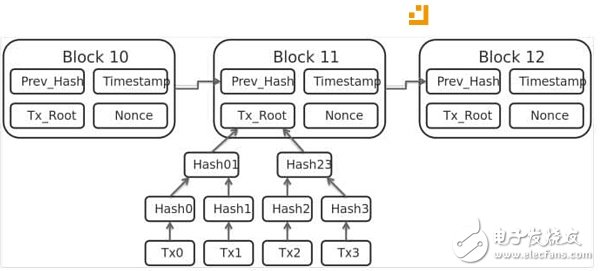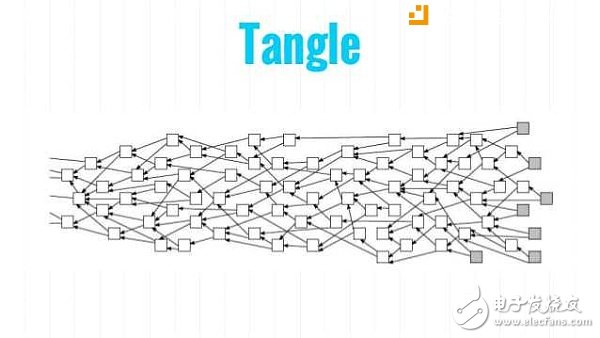Since the beginning of 15 years, the blockchain concept has been singled out. Before this, the blockchain was only a data structure in Bitcoin technology. In the white paper of Nakamoto, the block and chain were only a chain of blocks. With the concept of Ethereum's decentralized computer, many people began to call Ethereum blockchain 2.0, and Bitcoin was classified as blockchain 1.0. As for the blockchain 3.0, in order to seize the title of the blockchain 3.0, the market may not be open, it may be DAG.

DAG (Directed acyclic graph), a directed acyclic graph, is a commonly used data structure in the computer field. Because of the unique features of the topology, it is often used to process dynamic programming, seeking the shortest path in navigation, data compression. In the scene.
The first time DAG was combined with the blockchain was in the Nxt community. It can be found that DAG was originally created to solve the efficiency of the blockchain. Bitcoin's efficiency has been relatively low. Based on the workload, the block-out mechanism under the consensus is a reason. Due to the chained storage structure, there can only be one chain at a time in the whole network, which makes the block cannot be executed concurrently. Some people have proposed the topology of DAG to store blocks. At this time, more solutions are similar to sidechains. Different chains store different types of transactions, which reduces the possibility of double-flowering. When a node needs to be merged later. Several branches are merged into one block.
In brief introduction, the current bitcoin blockchain storage structure is as follows. Each block stores all the transactions in the current time period. The miners have been fighting for the packaging rights of a certain period of time, and all the transactions in the current time period are grouped into one. Block. At present, the bitcoin network averages a block time of 10 minutes.

Bitcoin blockchain storage structure
The Nxt community proposed to change the chained storage structure of the block into a block DAG. In the case that the block packing time is constant, N blocks can be packed in parallel in the network, and the transactions in the network can accommodate N times.

DAG of blocks by the Nxt community
It is found that the combination of DAG and blockchain at this time still stays in the side chain. Different types of transactions can be carried out in parallel in different chains to achieve the purpose of improving performance. At this time, the DAG still has the concept of block.
We have found that the ITC, which has recently sprung up, the IOTA, which is in full swing, and the high-profile Byteball, have proposed the concept of blockless no block. Whether it is Bitcoin or Ethereum, we always mention the concept of block speed. Bitcoin only has one block every ten minutes. It takes one hour for 6 blocks to be confirmed. Ethereum is much better, but the speed of the block is also good. It takes ten seconds. Why do you need a block?
The community has proposed the concept of DAGCoin for 15 years, DagCoin: a cryptocurrency without blocks. Here the blocks and transactions are merged together. We recall the concept of blocks and transactions in the Bitcoin network. Many transactions are packaged into blocks first, and prehash is used between blocks and blocks to maintain the transaction order of the entire network. The idea of ​​DAGCoin allows each transaction to directly participate in maintaining the order of transactions across the network. After the transaction is initiated, it skips the stage of packing the block and directly integrates into the whole network, thus achieving the so-called blockless effect. This really saves time for packaged transactions. As mentioned earlier, DAG's initial integration with the blockchain is to solve the efficiency problem. Now, without packaging confirmation, the transaction will directly enter the confirmation network after the transaction is initiated. Naturally improved a lot.
Since then, the prototype of the DAG blockchain, which is unique in blockless, has basically taken shape. The performance of IOTA and Byteball in the market is the most dazzling, and the most eye-catching in the near future is undoubtedly the ITC that appeared in the market in the dark horse.
Some concepts of the DAG blockchain are interesting, and understanding these concepts makes it easier to understand DAG technology.
1 From the perspective of probability, the double flower problem
In the Bitcoin network, through the UTXO model, a user can only initiate a transfer to UTXO that they can unlock, thus solving the double-flower problem. It is also mentioned in the Bitcoin white paper that it is possible for multiple mine unions to solve the hash problem at the same time. Obtaining the right to package the transaction at the same time is the right of the block, and there is a possibility of temporary fork. From this perspective, the so-called "global ledger state" in the Bitcoin network is also an uncertain state. The confirmation of a certain transaction status is determined by the number of subsequent transactions, and the more transactions that are subsequently logged, the lower the probability that the transaction status will be rolled back, and the more secure the transaction.
2 network width

IOTA's tangle network
An important issue in the DAG network is to solve the network width. In the DAG network, each transaction is confirmed and needs to be linked to a transaction that is already existing in the network and relatively new. If you select an earlier transaction in the network, the network width will be caused. Too wide, new transactions are difficult to confirm. The ideal state is that when a new transaction is initiated, the existing and relatively new transactions in the network are selected for link confirmation, so that the width of the network is kept within a certain range, allowing the new transaction to have a sufficiently fast confirmation time.
So what are the characteristics of DAG, actually let the ITC market value rise rapidly, the price increase of only one month on the line once exceeded 552%.
1. Trading speed is fast
As mentioned above, since DAG abandons the block concept and the transaction goes directly into the whole network, the transaction speed is expected to be much faster than the blockchain based on pow and pos.
2. No need to mine
The DAG decentralizes the transaction confirmation environment directly to the transaction itself, without having to be packaged into blocks by the miners to agree on the transaction sequence. So there is no miner role in the DAG network.
3. Very low commission
In the DAG network, there will be no price competition like Bitcoin and Ethereum due to the incentive mechanism of miners. Suitable for small high frequency trading.
As the first blockchain project based on DAG structure in China, the development of ITC has attracted a lot of attention. At present, it has attracted many professional investment institutions focusing on blockchain technology such as FBG, connecting capital and ChainFunder. I believe the technology of DAG will be followed. There will be more discussions. From a technical point of view, DAG gives us a completely different blockchain implementation, and the high performance and no-fee fees are really compelling. As the community further develops and develops DAG technology, perhaps DAG will be the real blockchain 3.0.
Kindwin Technology (H.K.) Limited , https://www.ktl-led.com